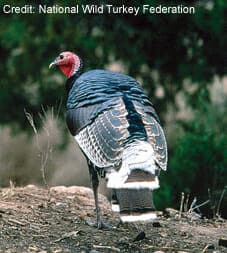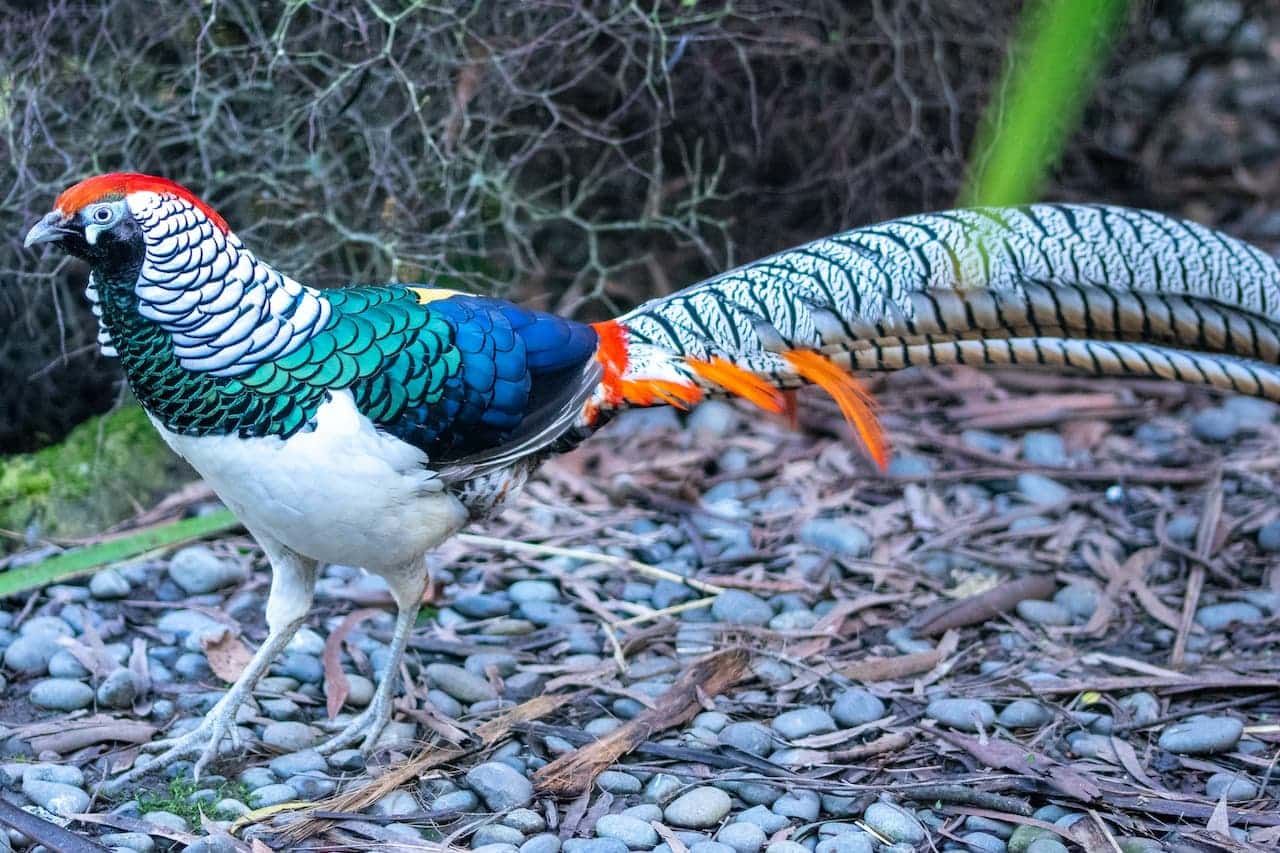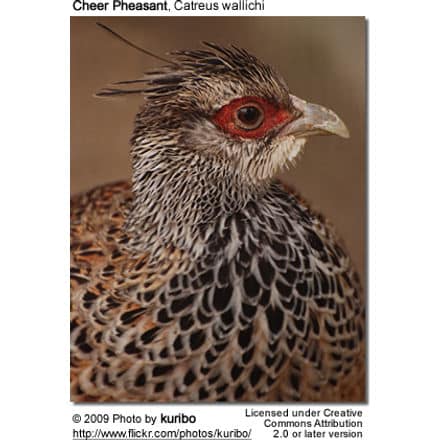Elliot’s Pheasants aka Bar-backed Pheasants
The Elliot’s Pheasants is also known as the Chinese Barred-backed Pheasant or Bar-backed Pheasant.
Its name commemorates the American ornithologist Daniel Giraud Elliot (1835-1915), author of A Monograph of the Phasianidae (1872) and one of the founders of the American Ornithologists Union.
The Elliot’s Pheasants (Syrmaticus ellioti ) is also known as the Chinese Barred-backed Pheasant or Bar-backed Pheasant. Its name commemorates the American ornithologist Daniel Giraud Elliot (1835-1915), author of A Monograph of the Phasianidae (1872) and one of the founders of the American Ornithologists Union.
The Elliot’s Pheasants is endemic to Southeastern China, where it lives in thick evergreen and mountain forests of southeastern China, at altitudes up to 6,200 feet (~1,900 meters).
Elliot’s Pheasant is considered a vanishing species as its numbers are rapidly decreasing due to habitat loss, limited range, and hunting for food. The Elliot’s Pheasant is evaluated as Vulnerable on the IUCN Red List of Threatened Species and is listed on Appendix I of CITES.

Description:
The Elliot’s pheasant is also a very strikingly beautiful pheasant. This large pheasant averages up to 31 inches (~80cm) in length.
Description from Pheasants of the World, by John Delacour 1977 2nd ed, pp 241-242.
Male:
Crown chestnut-brown, the eyebrows mixed with pale grey; cheeks and ear-coverts greyish brown; sides of neck whitish grey, the hind neck darker grey; chin, throat, and neck black; mantle and upper breast bright rufous chestnut, each feather having a sub-terminal black band and a metallic coppery red fringe; a white bar on the scapulars (shoulder feathers); wing rufous chestnut with a broad steel-blue band on the lesser coverts; greater coverts with a black sub-terminal bar and broad white tips, forming a band accross the wing. secondaries (shorter, upper “arm” feathers) and tertiaries chestnut with a black sub-terminal bar and a white or grey tip.
The primaries (= longest wing feathers) are dull brown; the lower back and rump are black barred with white. The tail of sixteen rectrices the long flight feathers of the tail) with broad bars of pale grey and rufous chestnut, separated by irregular black lines. Lower breast, abdomen and vent white, the feathers with hidden dark brown bases; thighs chestnut-brown barred with white; feathers of the flanks chestnut with broad white tips; under tail-coverts black and chestnut. Iris brown to orange; bill horny yellow; legs grey.

Female:
Crown rufous brown with blackish tips to the feathers; eyebrows, face, sides, and back of neck greyish fulvous; chin, throat, and foreneck black; mantle mottled, each feather being rufous brown with an arrow-shaped white shaft-marking and a broad subterminal black bar; scapulars (shoulder feathers) fulvous brown with ashy tips; wing-coverts, tertiaries and secondaries (shorter, upper “arm” feathers) vermiculated brown and black, with a large subterminal black patch and light greyish tip; the primaries (= longest wing feathers) are brownish black with interrupted rufous borders; lower back and rump rufous brown finely vermiculated with black; upper tail-coverts chestnut with peppered, pale brown tips, the longest with indistinct bars; central rectrices (= the long flight feathers of the tail) plain chestnut with black sub-terminal bars and broad white tips; tail short and bluntly pointed; upper breast mottled rufous brown with black sub-terminal spots or bars; feathers of lower breast, sides and flanks brown, with a white tip that becomes very broad on the abdomen which appears white; thighs brown; under tail coverts chestnut with broad blackish borders and white tips. Iris brown; bill horny brown; legs grey.

Immature:
Like the female, but duller and the throat white; young males soon show barred tail feathers.
Diet:
The diet consists mainly of seeds, leaves and berries, seeds, and ants.
Vocalizations:
Shrill squeals and low clucks and chuckles.

Breeding the Elliot’s Pheasant:
Breeding the Elliot’s Pheasant has its challenges, and yet this pheasant is a well-established species in aviculture.
The males will attain their adult plumage in the first year but are usually not fertile until they are two. Elliot’s Pheasants can be sexed at an early age, in fact when they are just a few weeks old. Hens have plain, drab central tail feathers while males have barred tail feathers.
Housing:
They are a hardy species and tolerate very low temperatures. One of the major problems breeders face is male aggression towards the hens. It is recommended to provide a large aviary with plenty of shrubs or branches in the pens to allow the hen cover to escape.
If further action needs to be taken to protect the female, clipping the male’s wings will allow the hens to get up high and escape if needed.
Males can be housed with up to three females, provided they have plenty of room and nesting sites.
They are a forest species, so they should be protected from direct sunlight as much as possible.
Shaded areas should always be available. Aviaries should have ample shade during the warmest months.
Breeding:
The breeding season begins in March or April. Hens generally lay well in captivity. An average clutch consists of 6-8 eggs, which the hen incubates for 25 to 26 days.
Elliot’s have been known to cross with other Syrmaticus species, and the resulting hybrids are often fertile. Many of the crosses were unintentional and based on the fact that the hens look so similar in appearance. Care should be taken to preserve this endangered species in its pure form to preserve this spectacular pheasant for future generations to enjoy.
Captive Diet:
Gamebird pellet feed, supplemented with fresh greens and insects (which should be naturally available in their aviary).
Other Related Web Links: Pheasant General Information … Pheasant Species … Pheasant Taxonomy … Breeding Pheasants … Pheasant Photo Gallery … Housing Pheasants … Pheasant Diseases




